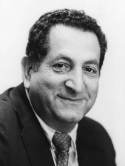| Abstract: |
Background. Verapamil can modulate multidrug resistance in vitro, but only at levels that are not tolerable when administered systemically. Regional strategies of drug administration may permit the delivery of high concentrations of a drug to specific areas with lower systemic levels. Colorectal cancers typically express the multidrug resistance phenotype. Methods. A Phase I trial was performed to determine the maximum tolerable dose (MTD) and dose limiting toxicities of verapamil by hepatic artery infusion, together with doxorubicin, to patients with hepatic metastases of colorectal cancer. Fourteen patients with metastatic colorectal cancer received a 14‐hour intrahepatic infusion of verapamil. Six hours after the start of the infusion, a fixed dose of doxorubicin (50 mg/m2) was given, also via the hepatic artery, over a 30‐minute period. Patients were followed by cardiac telemetry but were not in an intensive care setting, and no invasive monitoring was used. All patients had received prior intrahepatic chemotherapy. Results. The MTD of intrahepatic verapamil on this schedule in this patient population was 1.2 mg/kg/hour. Hypotension was the dose limiting toxicity. No major objective responses were noted in this heavily pretreated patient population. A dose of 1.0 mg/kg/hour is recommended for Phase II trials. Conclusions. Based on estimations of normal hepatic artery blood flow, the estimated concentration of verapamil delivered to the hepatic tumors at 1.0 mg/kg/hour is 3.6 μg/ml (7.3 μM), which is comparable to concentrations at which an in vitro reversal of MDR is seen. This study demonstrates that the systemic toxicities of an MDR reversal agent can be overcome by regional drug delivery, establishing this approach as an important model system for further study of MDR modulation. Copyright © 1994 American Cancer Society |
| Keywords: |
adult; clinical article; aged; treatment failure; clinical trial; doxorubicin; area under the curve; dose response; liver neoplasms; antineoplastic agent; colorectal cancer; adenocarcinoma; phenotype; carmustine; colorectal neoplasms; hypotension; liver metastasis; intraarterial drug administration; infusions, intra-arterial; drug blood level; phase 1 clinical trial; drug half life; mitomycin; floxuridine; telemetry; verapamil; drug tolerance; multidrug resistance; hepatic artery; drug resistance, multiple; drug elimination; intrahepatic; middle age; human; male; female; priority journal; article; support, non-u.s. gov't; support, u.s. gov't, p.h.s.
|








